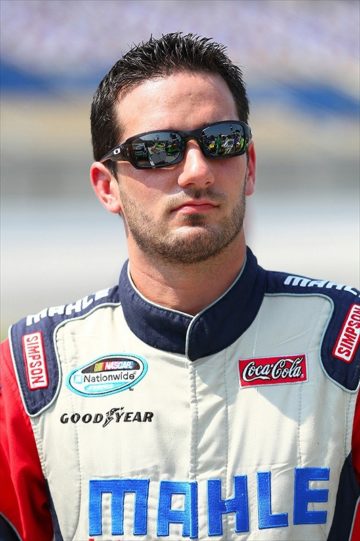If you had not seen a particular race but heard later that it was decided when one car chased another down from several seconds behind then the those two cars spun as that were coming to take the white flag with one of them recovering quickly enough to drive on to the win you would probably think you missed quite a show. Further, if you heard that the guy who ultimately won the race in question was a huge underdog in a major NASCAR event with a small family owned team beating out a driver who piloted a car owned and maintained by one of the sport’s massive super teams, you would really then think you had missed something special.
Well, that’s exactly what happened on Sunday afternoon in the NASCAR Xfinity Series Johnsonville 180 at Wisconsin’s Road America. Jeremy Clements of Spartanburg, SC pulled off one of the most improbable wins in recent NASCAR history to earn his first ever victory at that level of the sport. The 32-year-old former dirt racer passed Joe Gibbs Racing driver Matt Tifft after both cars spun off track as they fought for the lead with the white flag in sight.
NASCAR needs more stories like this in its two “lower” divisions, the Xfinity Series and the Camping World Truck Series. And when I say that, I’m not necessarily talking about the underdog beating the big power teams because there won’t be very many of those instances. Instead, I’m talking about the need for those two divisions to make a break from the Monster Energy NASCAR Cup Series for the purpose of developing their own identities and at least giving rise to the possibility that such anomalies as the Clements win has a chance to happen.
While telling a co-worker, who was once and avid NASCAR follower but now barely pays attention, about the Clements win his response was, “So Kyle Busch wasn’t in that race?”
Fans have become so accustomed to top Cup drivers scoring wins in the two lower series that it seems to be some sort of rare occurrence when one of them doesn’t collect a trophy. For a series whose motto is ‘Names Are Made Here’, it seems as if those who already have had their names made do most of the winning.
As a matter of fact, full-time Xfinity Series regulars have only won six of the 23 races held on that series this season with Cup drivers capturing the other 17 checkered flags. Clements was just the fourth regular campaigner to accomplish a trip to victory lane in 2017.
But as long as the Xfinity Series continues to serve as a warmup for the Monster Energy NASCAR Cup Series each weekend, the ‘second series’ will never emerge from the shadow of its big brother. And more, it is never good to be racing in front of empty grandstands as is often the case when the two tours combine at the same track on the same weekend.
The Monster Energy NASCAR Cup Series and the Xfinity Series have raced at the same track on the same weekend in 20 of the Xfinity’s 23 races held so far. Ultimately, there will be a total of 29 Xfinity races held at the same venue as Cup races in 2017.
The Xfinity Series could race at facilities with smaller grandstand seating capacities at which that race would be the biggest event to take place on that track during the season. There are numerous short tracks and other facilities out there that would fit this description. And if sanctioning fees are the problem, lower the sanctioning fee to provide a more enticing product.
Smaller grandstands that look more full would produce a more exciting type of atmosphere than tracks surrounded by vast empty spaces. And separating from the Cup Series would also split the more high profile drivers away from the Xfinity Series and allow that series to truly live up to its motto.
The race at Road America has been one of the more talked about events in recent Xfinity Series history because of how the race played out. An underdog driver with a nine-year-old chassis beat out some of the sports power teams in a stand-alone event that had no significant Cup driver presence. NASCAR needs to look at ways to create more opportunities like this rather than simply have the series serve as a warmup for its big brother.






